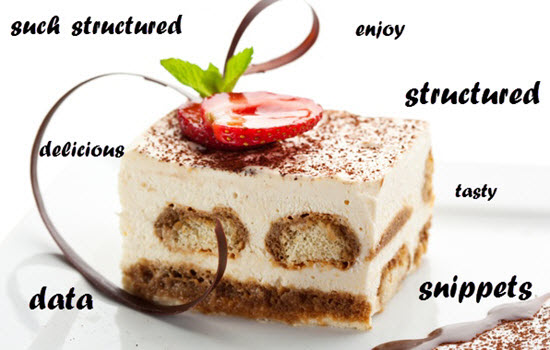
What is a structured snippet?
Google web search has evolved in the last several years. With personalized and conversational search powered by Knowledge Graph Optimization, Google tries to pick the most relevant data from your site in order to return it to searchers under search query links. It’s likely that newly designed structured snippets are the result of the long-term rollout of the Google Hummingbird enhanced algorithm.
The idea of extracting relevant information from your site comes from Google’s intention to deliver well structured results from unstructured content.
Structured snippets are snippets supported by a structured data rich description of a page that appears in the Google SERPs. Though Google is getting smarter, it uses bots to read and parse the important meta data contained in your content. Structured data is a general name that stands for all HTML markups determined by a predefined set of rules. To implement structured data on your site, you need to mark up aspects of your content (e.g. personal info, review details, product specs etc) with specific tags in your HTML code. There are several ways to add structured data on your site:
- Microdata (recommended)
- Microformats
- RDFa
It’s preferably using microdata, but you can go with any of the ways. Use the Google Structured Data Markup Helper to understand what properties of the content on your pages should be added to your structured data markup.
Let’s analyze the quality of well-implemented structured data on one of the structured snippets of the recipe of my favorite dessert, Tiramisu.
In the recipe snippet example we have some of the property tags:
- Ratings
- Photo
- Name
- Total time
- Prep time (sorting ingredients, warming oven)
A perfect structured snippet of a recipe should include:
- Photo
- Review (ratings)
- Name of food/type of food
- Prep time and/or or total time
- Ingredients
- Calories
It would be great if the owner of Foodnetwork.com include in its structured data calories, ingredients and other property tags. I would definitely click on the query that listed such essential data.
How can my website get rewarded for using Structured Snippets?
The use of structured data will have a strong positive effect on your site. The most evident results will be an uptick in the click through rate that directly affects the boost of traffic to your site. After you have patterned your structured data markup, keep an eye on your global and local rank performance. By the way, WebCEO Online has just added to its Keyword Rank Checker the opportunity to monitor mobile rankings! Additionally, conducting a comprehensive Website Audit can ensure that your structured data is correctly implemented and functioning optimally, which is essential for achieving the best possible search rankings.
What information from my site should appear in structured snippets?
Google picks your most important HTML tags which include different content types like product specs, addresses, phone numbers, prices, recipes, reviews, personal info and other properties of your content. That being said, if your website is related to eCommerce, local services like restaurants and hotels or to sites with music and video content, you should pattern all the specific properties of your content into table-based data markup. As for the format of pattern, Google now recommends that you use the Schema.org markup specification and Structured Data Testing Tool in order to avoid pitfalls.



